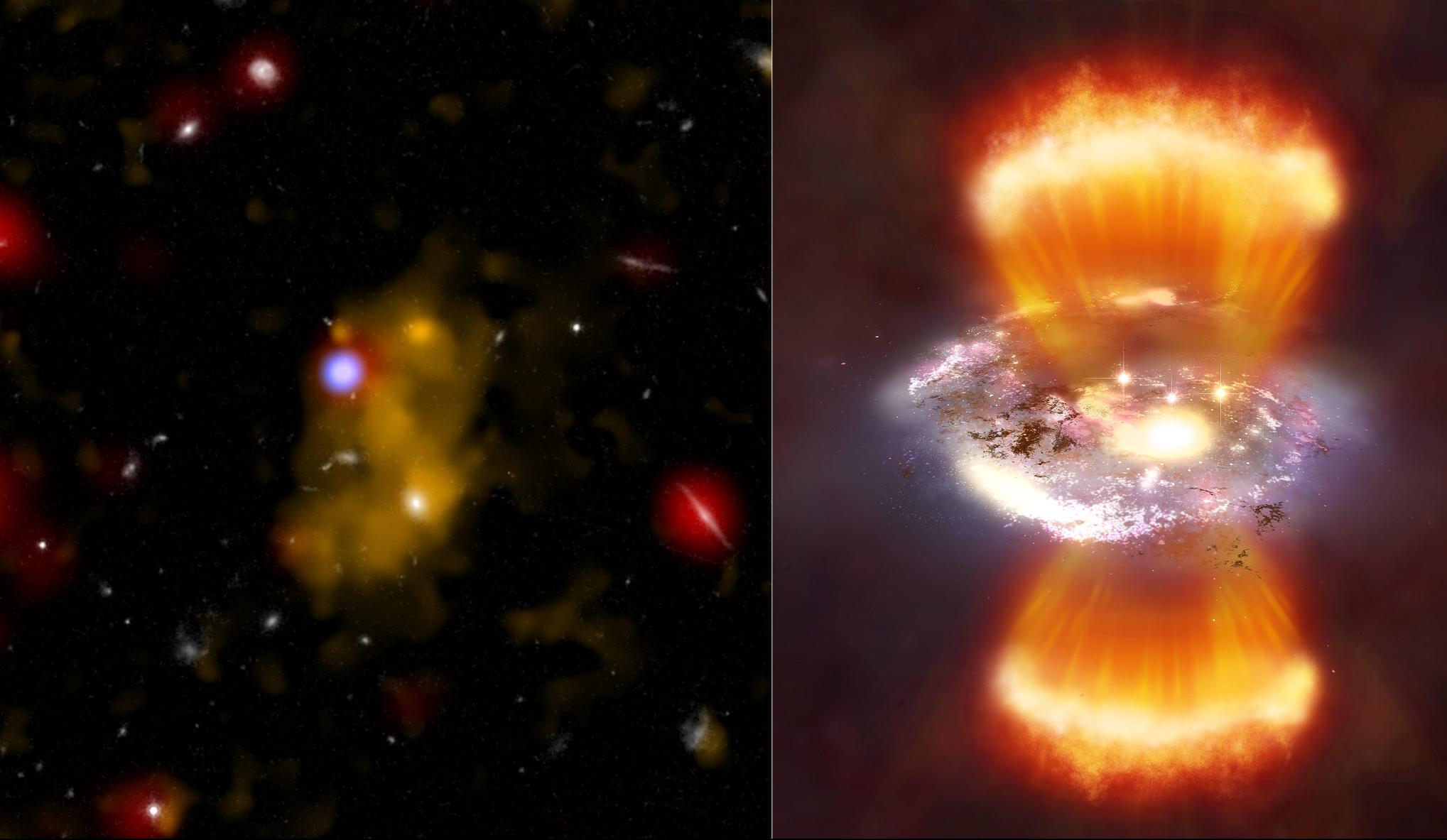The brightest end of the Lyman alpha luminosity function

The Javalambre-Photometric Local Universe Survey, J-PLUS, is an unprecedented photometric sky survey of 8500 deg2 visible from Javalambre (Aragón, Spain), using a set of 12 broad, intermediate and narrow-band filters. The J-PLUS photometric system is well suited to study the properties of nearby galaxies (z < 0.015). However, there are a few redshift windows beyond the nearby Universe that can be explored with J-PLUS. One of them is Lyman-break galaxies at z = 2 – 3.
A Lyman-alpha emitter (LAE) is a type of distant galaxy that emits Lyman-alpha radiation from neutral hydrogen. Most known LAEs are extremely distant, and because of the finite travel time of light they provide glimpses into the history of the universe. When observed at high redshift, isolated and grouped LAEs would represent the progenitors of present-day galaxies and clusters, respectively, hence providing extremely valuable insights about the structure of these objects.
The spectral properties of LAEs are usually interpreted as to be coming from young (less than 50 million years old) and low-mass (leas than 1010 solar masses) galaxies which are actively star-forming and dust-poor. A basic statistical tool to study the population of high-z LAEs is the description of their number density, at a given redshift, as a function of line luminosity, namely the luminosity function.
Now, a team of researchers uses 1 the J-PLUS First Data Release (July 2018) (J-PLUS-DR1), that comprises 511 J-PLUS fields observed in twelve optical bands amounting to 1022 deg2 – unprecedented for narrow-band-surveys of z greater than 2 luminous line-emitters, for obtaining large samples of photometrically-selected bright LAEs, and probe the bright-end of their luminosity function at four different redshifts. The combination of large survey area and multi-narrow-band data provides the means to assess the nature of bright LAEs and sample their distribution over a luminosity regime which is yet poorly constrained.

The researchers selected approximately 14,500 hyper-bright LAE candidates. They tested this selection with two spectroscopic follow-up programs at the GTC telescope, which confirmed as LAE roughly 89% of the targets, with circa 64% being genuine z∼2.2 quasars.
As the Lyman-alpha luminosity function is a Schechter function, a parametric description of the space density of galaxies as a function of their luminosity, the results unveil with high detail the Schechter exponential-decay of the brightest-end of the Lyman-alpha luminosity function, complementing the power-law component of previous luminosity function determinations
These values are significantly different from the typical Schechter parameters measured for the Lyman-alpha luminosity function of high-z star-forming LAEs. This suggests that, for z grater than 2, the active galactic nuclei and quasars (likely dominant in the samples) are described by a structurally different luminosity function from that for star-forming LAEs.
Approximately 70% of LAE candidates lacked any spectroscopic confirmation by current surveys. Based on the spectroscopic follow-up results, the researchers suggest that their samples are dominated by high-z quasars which are not yet identified as such, but rather misclassified as stars by current archival data, due to their photometric colours. This would imply that the most abundant class of LAEs for z greater than 2 would be active galactic nuclei and quasars.
Author: César Tomé López is a science writer and the editor of Mapping Ignorance.
Disclaimer: Parts of this article might have been copied verbatim or almost verbatim from the referenced research paper.
References
- D. Spinoso, A. Orsi1, C. López-Sanjuan, S. Bonoli, K. Viironen, D. Izquierdo-Villalba, D. Sobral, S. Gurung-López, A. Hernán-Caballero, A. Ederoclite, J. Varela, R. Overzier, J. Miralda-Escudé, D. J. Muniesa, J. M. Vílchez, J. Alcaniz, R. E. Angulo, A. J. Cenarro, D. Cristóbal-Hornillos, R. A. Dupke, C. Hernández-Monteagudo, A. Marín-Franch, M. Moles, L. Sodré Jr and H. Vázquez-Ramió (2020) J-PLUS: Unveiling the brightest end of the Lyα luminosity function at 2.0 < z < 3.3 over 1000 deg2 Astronomy & Astrophysics doi: 10.1051/0004-6361/202038756 ↩